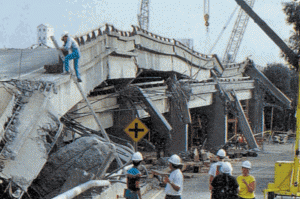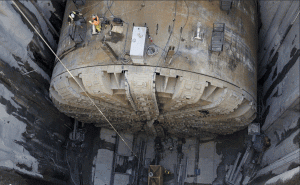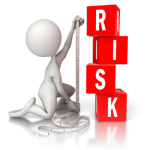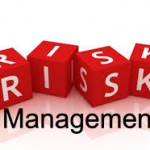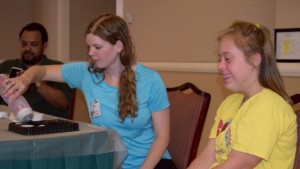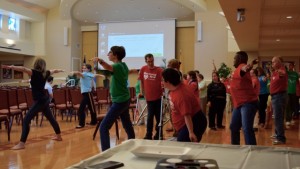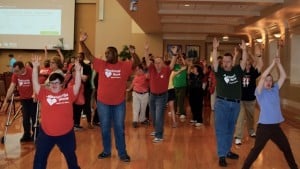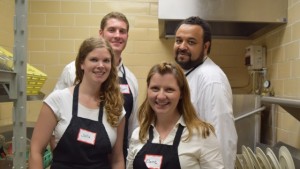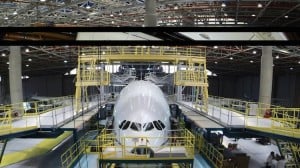After taking our Project Management class, I have been fascinated about how organizations manage risks, and how project managers put together a risk management plan. There is one project that is on-going in the city of Seattle. The project is replacing a double decker highway or better known as the Alaskan Way Viaduct. The viaduct, as it’s commonly known, is a road system that sits on top of each other and runs a long Elliott Bay about the roadway, Alaskan Way. The risk of having this roadway is similar to the Loma Prieta earthquake of 1989 in Northern California, where multiple roadway infrastructures were destroyed. The San Francisco Bay Area had a similar viaduct, called the Cypress Viaduct, and it ran along the Bay Shore in Oakland. This viaduct tragically tumbled down during the earthquake killing 42 people. I was 5 years old at the time, and I vividly remember when the earthquake occurred, as multiple buildings and infrastructure were destroyed (the Bay Bridge even lost part of his bridge). The earthquake was famous because it occurred during the World Series, when the Giants and A’s played each other, known as the Battle of the Bay. Seattle is in a similar position, as geologists have been theorizing that the area is long overdue for a massive earthquake.
Washington state and the city of Seattle have addressed this risk, and knew that the viaduct needed to be retrofitted or replaced with a tunnel. Residents were asked to vote on a measure on either saving the viaduct or boring a tunnel to replace the infrastructure. I voted on the measure, as I remember the tragedy in the Bay Area, and I asked for the city to build a tunnel. The measure passed in favor of the tunnel, and the project started in late 2012. However, the project has been delayed due to the boring process, where the machine called Bertha suddenly stopped mid-way through the project. It has been 2 years since this delay, and I can’t help but think that they did not accurately account for Bertha stopping. Let’s quickly recap the risk management steps, and what steps might have been missed with the Alaskan Way Viaduct project.
Risk Management steps:
- Risk identification – the process of listing out the possible scenarios of a risk occurring, including brainstorming, problem identification, and risk profiling. A common mistake is focusing on the objective (completing the tunnel), and not the events that could produce the consequences (Bertha stopping). In addition to identifying the risk, the organization needs to understand their Risk Breakdown Structure, split into four parts; technical, organizational, external, and project management. Bertha fits squarely into the technical breakdown, specifically under performances and reliability.
- Risk Assessment – this is broken down into 2 categories; probability and impact. Organizations generally utilize a semi-quantitative scale, and the likelihood on a numerical scale, 1-5, where 5 is very likely of occurring. For the Alaskan Way Viaduct, I assume that Bertha had a likelihood of breaking down, but the probability of breaking down was unforeseen, and the project management team might have given Bertha a score 1-3, while a 4-5 might have prevented the long delay.
- Risk Response Development – this has four components, and includes: mitigating risk, avoiding risk, transferring risk, and retaining risk. Mitigating risk would include how to avoid Bertha breaking down or how to reduce the impact of failure. However, Bertha broke down due to being overheated, and experienced mechanical failures. Mitigating risk also includes reducing the impact. In this case, the project management team did not anticipate a mechanical failure, and thus not being able to mitigate their risk. Lastly, retaining risk includes that the project management team makes a conscious decision to accept the risk. This seems unlikely as Bertha’s failure has cost the project more than 1.1 billion dollars.
- Risk Response Control – this includes risk control and establishing a change management system. Risk control includes execution of the risk response strategy, monitoring triggering events, initiating contingency plans, and watching for new risks. For change management, this includes monitoring, tracking and reporting risk, foresting an open organization environment, repeating risk identification exercise, and assigning responsibility for managing risk. For the Viaduct project, the contingency plan was to fix Bertha, which took 1 year to fix.
As we can see, the Alaskan Way Viaduct has experienced a major setback, and might have been prevented with a better risk management plan. Do you think this project was too big of an endeavor to complete? What else should have the construction firm have done to prevent Bertha on breaking down? I believe that Bertha should have been tested before starting the project, which could have mitigated the risk of failure. Hindsight is always 50/50.
Cypress Viaduct:
Image of Bertha:
